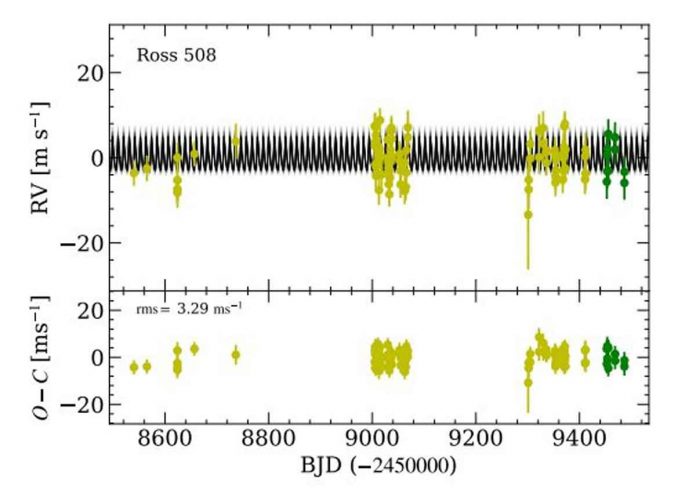An international team of scientists has discovered a new super-Earth exoplanet circling Ross 508, a neighboring M-dwarf star. The recently discovered extraterrestrial world, known as Ross 508 b, turns out to be at least four times the size of our globe. The discovery was documented in a paper published on arXiv.org on May 24.
Planets that are more massive than Earth but not as huge as Neptune are known as “super-Earths.” Although the phrase “super-Earth” merely refers to the planet’s mass, astronomers use it to denote planets that are larger than Earth but less than the “mini-Neptunes” (with a radius between two to four Earth radii).
Astronomers led by Subaru Telescope’s Hiroki Harakawa have identified a new super-Earth-class planet. They measured the radial velocity (RV) of Ross 508, a M dwarf of spectral class M4.5 situated 36.5 light years away, using the Subaru 8.2-m telescope’s InfraRed Doppler (IRD) sensor.
“The M4.5 dwarf Ross 508 has a strong RV periodicity of 10.75 days, with probable aliases of 1.099 and 0.913 days, according to our findings. This periodicity has no match in photometry or stellar activity indicators, but a Keplerian orbit due to a new planet, Ross 508 b, fits in nicely “according to the researchers.
Ross 508 b is a newly discovered exoplanet with a minimum mass of four Earth masses that orbits its host every 10.75 days at a distance of around 0.053 AU. This predicts an orbit-averaged insolation of around 1.4 times Earth’s value, placing this planet towards the inner boundary of Ross 508’s habitable zone, according to the researchers.
Ross 508 b’s actual orbital eccentricity is unclear, and future research could provide significant details about the planet’s origin. Ross 508 b is thought to have formed beyond the snow line (approximately 0.16 AU) and experienced inward Type I migration, according to the researchers. Even if the eccentricity of a migrating alien world is initially strong, the force exerted on the planet by density waves can dampen it.
Ross 508’s parent star has a radius of around 0.21 sun radii and a mass of about 0.18 solar masses, resulting in a density of 26.5 g/cm3. The star’s metallicity is calculated to be -2.0 and its effective temperature is 3,071 K.
To summarise the findings, the paper’s authors expect that future studies using IRD and other high-precision near-infrared spectrographs would allow the detection of planets orbiting other stars like Ross 508.
“Our discovery shows that the near-infrared RV search can be quite useful in locating a low-mass planet surrounding cold M dwarfs like Ross 508. (…) Other late-M dwarf RV studies utilising high-dispersion spectrographs, such as HPF, CARMENES, and SPIROU, as well as exoplanet surveys employing the transit technique from space (e.g., TESS) and the ground (e.g., SPECULOOS), will improve exoplanet exploration “The researchers came to a conclusion.

